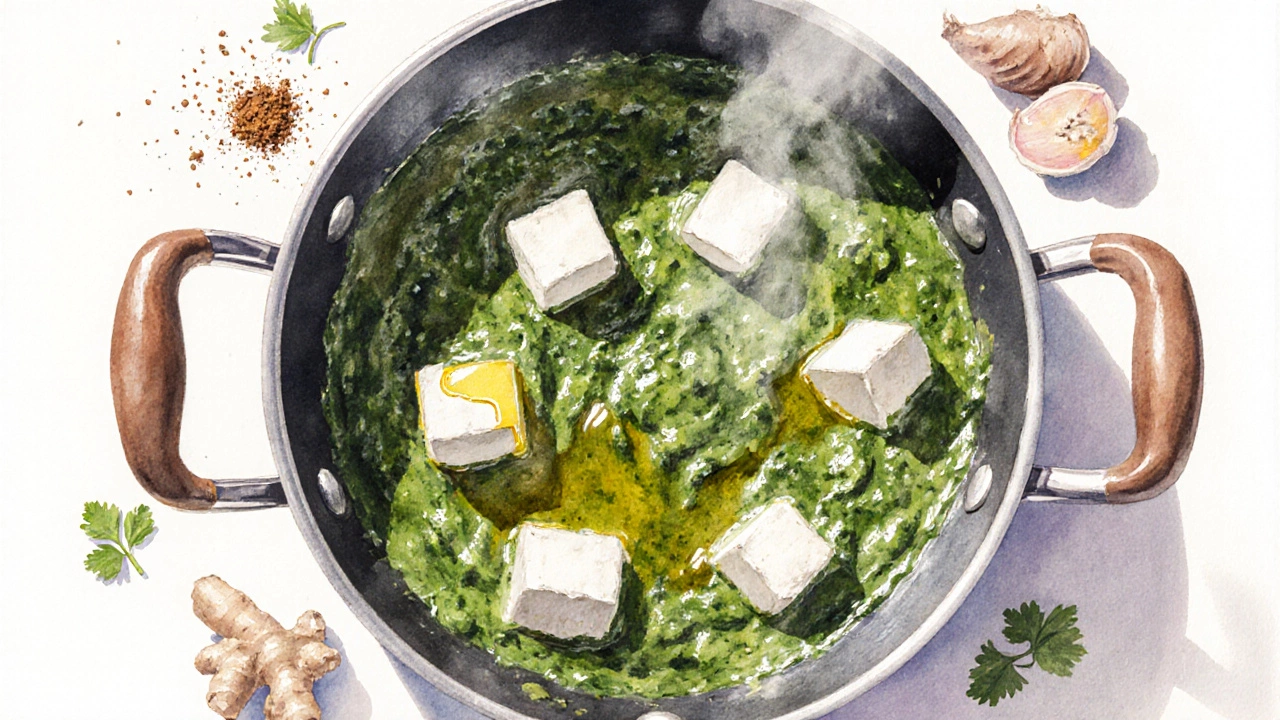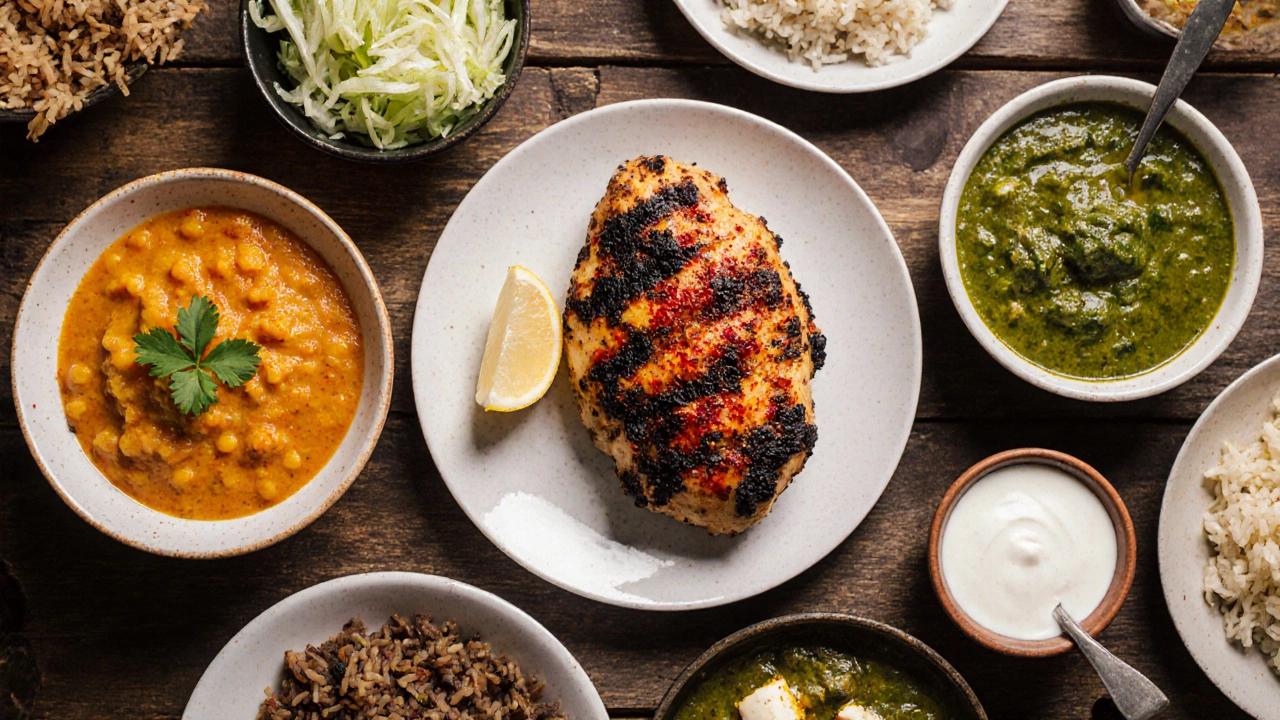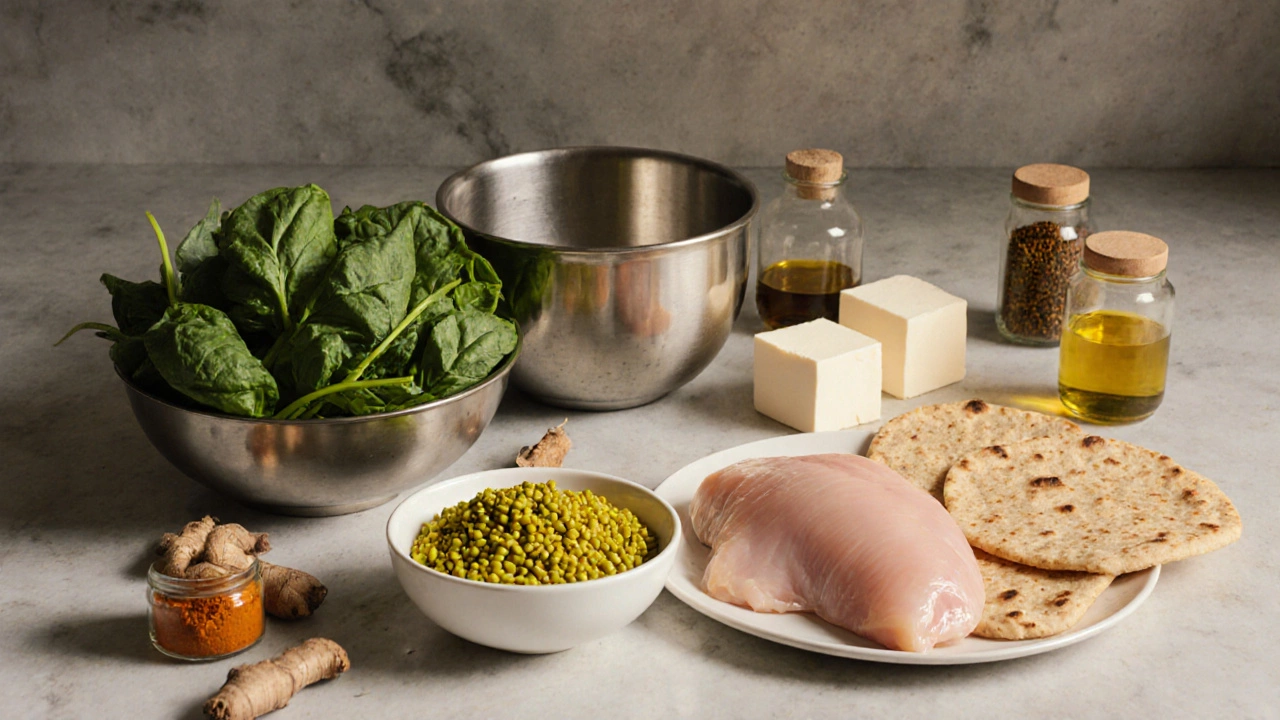Indian Dish Nutrition Calculator
Calculate Your Meal Nutrition
Nutritional Results
Iron, Calcium, Vitamin A
Carbs: 25g, Fat: 5g, Protein: 12g
Health Benefits
This meal provides high protein content, good fiber, and essential micronutrients. It's balanced with moderate calories.
Ever wondered which Indian plate can keep you fit without sacrificing taste? Below you’ll find a straight‑forward guide that cuts through the hype and points to the dishes that truly pack nutrition, fiber, and flavor.
What makes a dish "healthy"?
Before naming the champion, let’s set the yardstick. A healthy Indian dish should meet three basic criteria:
- Nutrient density - high in vitamins, minerals, and plant‑based protein per calorie.
- Balanced macronutrients - moderate carbs, lean protein, and limited saturated fat.
- Whole‑food focus - minimal refined flour, added sugar, or heavy cream.
Using this framework lets us compare traditional recipes without cherry‑picking the ingredients.
Top three healthiest Indian dishes
These dishes consistently score high on the nutrition checklist while staying true to regional flavors.
1. Palak Paneer is a creamy spinach and cottage‑cheese curry that delivers iron, calcium, and protein without excessive oil
Why it works:
- Spinach supplies vitamin K, vitamin A, and folate.
- Paneer (made from low‑fat milk) adds calcium and a complete protein.
- Cooking is limited to a quick sauté in 1‑2 teaspoons of mustard oil or ghee.
Typical portion (½ cup) contains roughly 180 kcal, 12 g protein, 5 g fat, and 5 g fiber.
2. Moong Dal is a split‑green‑gram soup seasoned with turmeric, cumin, and ginger, offering high plant protein and low glycemic carbs
Why it works:
- Moong beans are one of the leanest legumes - about 24 g protein per cup when cooked.
- Turmeric adds anti‑inflammatory curcumin.
- Only a splash of oil (½ tsp) is needed for the tempering.
One bowl (≈1 cup) clocks in at 210 kcal, 14 g protein, 4 g fat, and 8 g fiber.
3. Tandoori Chicken is a grilled chicken dish marinated in yogurt, lemon, and spices, providing lean protein and probiotic benefits
Why it works:
- Skinless chicken breast keeps saturated fat under 2 g per serving.
- Yogurt marination tenderizes meat and adds calcium.
- High‑heat grilling eliminates the need for extra oil.
A 150‑gram portion delivers around 190 kcal, 30 g protein, 3 g fat, and zero fiber - perfect for a protein‑heavy meal when paired with a veggie side.
Quick comparison of the top picks
| Dish | Calories | Protein (g) | Fiber (g) | Key micronutrients |
|---|---|---|---|---|
| Palak Paneer | 180 | 12 | 5 | Iron, Calcium, Vitamin A |
| Moong Dal | 210 | 14 | 8 | Folate, Magnesium, Vitamin C |
| Tandoori Chicken | 190 | 30 | 0 | Vitamin B6, Selenium, Calcium (from yogurt) |

How to make these dishes at home - simple steps
All three recipes can be prepared in under 45 minutes with pantry staples.
- Palak Paneer: blanch fresh spinach, blend with a splash of water, sauté garlic‑ginger, add low‑fat paneer cubes, a pinch of garam masala, and finish with a drizzle of mustard oil.
- Moong Dal: rinse split moong, pressure‑cook with turmeric and water, temper with cumin seeds, dried red chilies, and a few coriander leaves.
- Tandoori Chicken: whisk yogurt, lemon juice, ginger‑garlic paste, and tandoori masala; coat chicken pieces, refrigerate 2 hours, then grill or bake at 220 °C for 20 minutes.
Serve each with a side of Brown Rice or Quinoa Upma for extra fiber, or pair the chicken with Cabbage Thoran, a lightly stir‑fried cabbage dish seasoned with mustard seeds.
Smart swaps and extras
Want to boost the health factor further? Try these easy tweaks:
- Replace regular paneer with tofu for a vegan version - protein stays high, saturated fat drops.
- Add a handful of chopped kale to Moong Dal for extra antioxidants.
- Serve Tandoori Chicken with Whole Wheat Roti instead of naan to keep carbs complex.
- Top any of the dishes with a spoonful of Greek‑style yoghurt raita - it adds probiotics and cools the palate.

Meal‑planning tips for a balanced Indian menu
Combine the dishes to hit all macro goals in a day:
- Breakfast: Quinoa Upma with carrots and peas (high fiber, moderate carbs).
- Lunch: Moong Dal + Brown Rice + Cabbage Thoran (protein + veg).
- Dinner: Tandoori Chicken + Whole Wheat Roti + a side of fresh cucumber salad (lean protein + low‑fat carbs).
This rotation gives roughly 1500 kcal, 120 g protein, 45 g fiber, and a rainbow of micronutrients without feeling restrictive.
Common pitfalls and how to avoid them
Even well‑intentioned cooks can slip into unhealthy habits. Here’s what to watch out for:
- Over‑oil: measure oil with a teaspoon; use a non‑stick pan.
- Heavy cream or coconut milk: substitute with low‑fat yoghurt or almond milk.
- Refined flour roti: choose whole wheat or millet flour.
- Excess salt: limit to ½ tsp per recipe; enhance flavor with herbs, lemon, or toasted spices.
Frequently Asked Questions
Which Indian dish has the most protein?
Tandoori Chicken, especially when using skinless breast meat, provides about 30 g of protein per 150‑gram serving - the highest among the dishes listed.
Can I make these dishes vegetarian?
Yes. Swap paneer with tofu in Palak Paneer, keep Moong Dal as‑is (it’s already veg), and replace Tandoori Chicken with grilled paneer or marinated cauliflower for a satisfying plant‑based alternative.
How long can I store cooked dal?
Refrigerated in an airtight container, cooked Moong Dal stays fresh for 3‑4 days. For longer storage, freeze in portion‑sized bags for up to 2 months.
Is using ghee okay for a healthy dish?
A teaspoon of ghee adds flavor and short‑chain fatty acids without blowing up the calorie count, so it’s fine in moderation.
What side dishes keep the meal low‑carb?
Cabbage Thoran, cauliflower rice, or a simple cucumber‑mint raita keep carbs under control while adding crunch and freshness.
Pick one of these plates, tweak it to your taste, and enjoy Indian flavors without the guilt.
